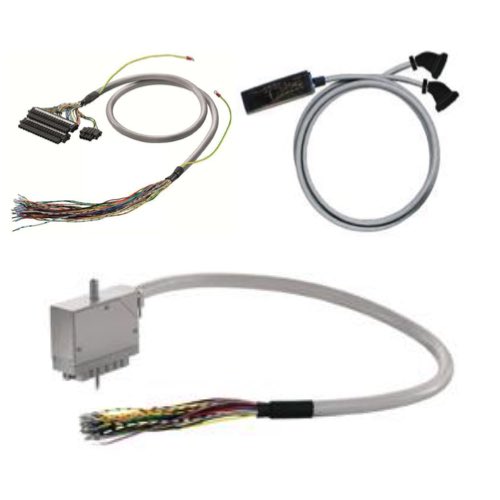PLC Cables

PLC cables are essential components in industrial automation and control systems, providing reliable communication between programmable logic controllers (PLCs), field devices, and programming computers. These cables support tasks such as PLC programming, configuration, diagnostics, and real-time data exchange, helping ensure proper system operation and performance. RSP Supply carries a full catalog of PLC cables from trusted manufacturers including Weidmüller and Phoenix Contact.
Common PLC cable types include USB programming cables, Ethernet communication cables, and specialty interface cables designed for specific PLC models and protocols. USB programming cables are widely used for connecting PLCs to computers due to their ease of use and broad compatibility. Other PLC cables are designed to support industrial communication standards while maintaining signal integrity in electrically noisy environments. Reliable data transmission is critical in automation systems, and high-quality PLC cables help ensure accurate, consistent communication between devices. Many PLC cables are engineered with shielding, robust connectors, and industrial-grade materials to support long-term use in demanding environments. Selecting the correct PLC cable requires verifying compatibility with the PLC model, communication interface, and application requirements to ensure dependable system performance.
FAQs
Q: What are PLC cables used for?
PLC cables are used to connect programmable logic controllers to computers, HMIs, and other devices for programming, communication, and data transfer.
Q: What types of PLC cables are available?
Common PLC cables include USB programming cables, Ethernet cables, and proprietary communication cables designed for specific PLC platforms.
Q: Why is PLC cable quality important?
High-quality PLC cables help maintain data integrity, reduce communication errors, and ensure reliable operation in industrial environments with electrical noise.
Q: Are PLC cables specific to certain PLC models?
Yes, many PLC cables are designed to be compatible with specific PLC brands or models, so compatibility should always be verified before purchase.
Q: Which manufacturers offer PLC cables at RSP Supply?
RSP Supply offers PLC cables from trusted manufacturers such as Weidmüller and Phoenix Contact.
Why Buy PLC Cables from RSP Supply
RSP Supply provides a comprehensive selection of PLC cables designed for reliable programming and communication in industrial automation systems. Our offerings from Weidmüller and Phoenix Contact support dependable data transmission, verified compatibility, and long-term performance in demanding control applications.

